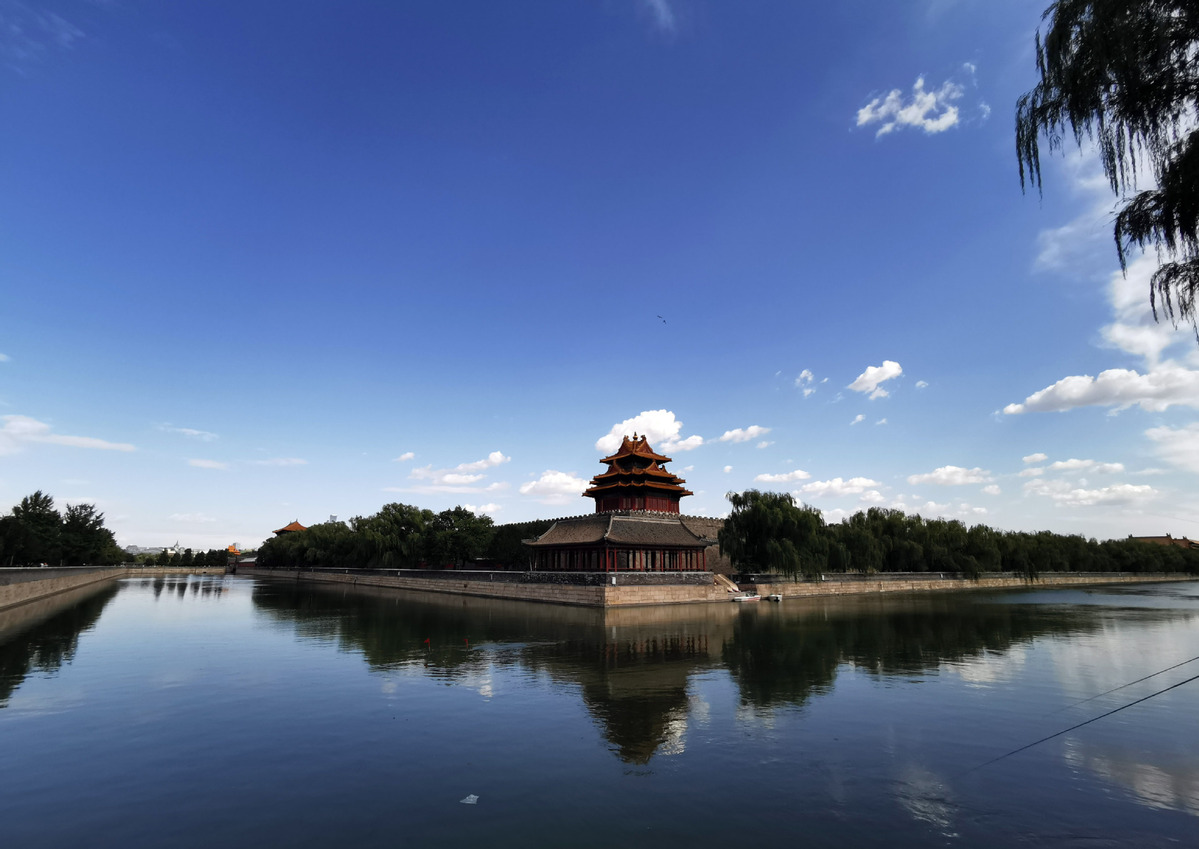


A view of the Corner Tower at the Palace Museum in Beijing on Sept 3, 2020. [Photo/Xinhua]
China's efforts to realize net zero carbon dioxide emissions show enormous potential in helping alleviate negative health effects caused by air pollution and climate change, a report by medical journal Lancet said on Thursday.
"Health effects from climate change in China are accelerating, posing an unacceptably high amount of health risk if global temperatures continue to rise," said the report, the first of its kind by the journal on the links between health and climate change in China.
Unveiled by the Lancet Countdown Center for Asia, headquartered at Tsinghua University in Beijing, the report also said heat wave-related mortality quadrupled from 1990 to 2019, causing 26,800 deaths last year.
Compared to the early 2000s, people aged 65 or above endured an average of 13 more heat wave days in 2019, said the report.
For outdoor workers, their potential labor productivity loss caused by heat reached 0.5 percent of the total national working hours. That is about 1 percent of the nation's GDP, equivalent to its annual fiscal expenditure on science and technology.
The report said, however, by aligning pandemic recovery and climate plans with the country's pledge to achieve carbon neutrality by 2060, China can protect public health, promote economic sustainability and also preserve the planet.
"The enormous potential for improving public health in the immediate and near term by tackling climate change can already be detected in the effects of policy shifts," it said.
The journal said a reduction in coal used in China's total primary energy supply amid surging investment in renewable energy has helped the nation reduce the annual average density of PM2.5-tiny particulate matter that is hazardous to health-by 28 percent in the country's urban areas from 2015 to 2019, which has led to 90,000 fewer deaths annually.
These gains are only a glimpse of what is possible, it said, as coal still represents 59 percent of the total primary energy supply in China, and 42 percent of the country's population still live in areas that don't meet the World Health Organization's standards for air pollution, the report said.
The WHO's guideline said PM2.5's annual mean concentrations should not exceed 10 micrograms per cubic meter. The average density of the particulate matter in China, however, stood at 36 mcg/cubic m last year.
The report makes it clear that while there is positive development in China, the nation still needs to scale up its climate efforts to address the challenge ahead, said Cai Wenjia, associate professor with Tsinghua's Department of Earth System Science.
Cai, also co-director of Lancet Countdown Center for Asia, suggests that China take the health effects from climate change into consideration as it drafts the road map to peak carbon emissions before 2030 and realize net zero carbon dioxide emissions before 2060.

 Award-winning photos show poverty reduction achievements in NE China's Jilin province
Award-winning photos show poverty reduction achievements in NE China's Jilin province People dance to greet advent of New Year in Ameiqituo Town, Guizhou
People dance to greet advent of New Year in Ameiqituo Town, Guizhou Fire brigade in Shanghai holds group wedding
Fire brigade in Shanghai holds group wedding Tourists enjoy ice sculptures in Datan Town, north China
Tourists enjoy ice sculptures in Datan Town, north China Sunset scenery of Dayan Pagoda in Xi'an
Sunset scenery of Dayan Pagoda in Xi'an Tourists have fun at scenic spot in Nanlong Town, NW China
Tourists have fun at scenic spot in Nanlong Town, NW China Harbin attracts tourists by making best use of ice in winter
Harbin attracts tourists by making best use of ice in winter In pics: FIS Alpine Ski Women's World Cup Slalom
In pics: FIS Alpine Ski Women's World Cup Slalom Black-necked cranes rest at reservoir in Lhunzhub County, Lhasa
Black-necked cranes rest at reservoir in Lhunzhub County, Lhasa China's FAST telescope will be available to foreign scientists in April
China's FAST telescope will be available to foreign scientists in April